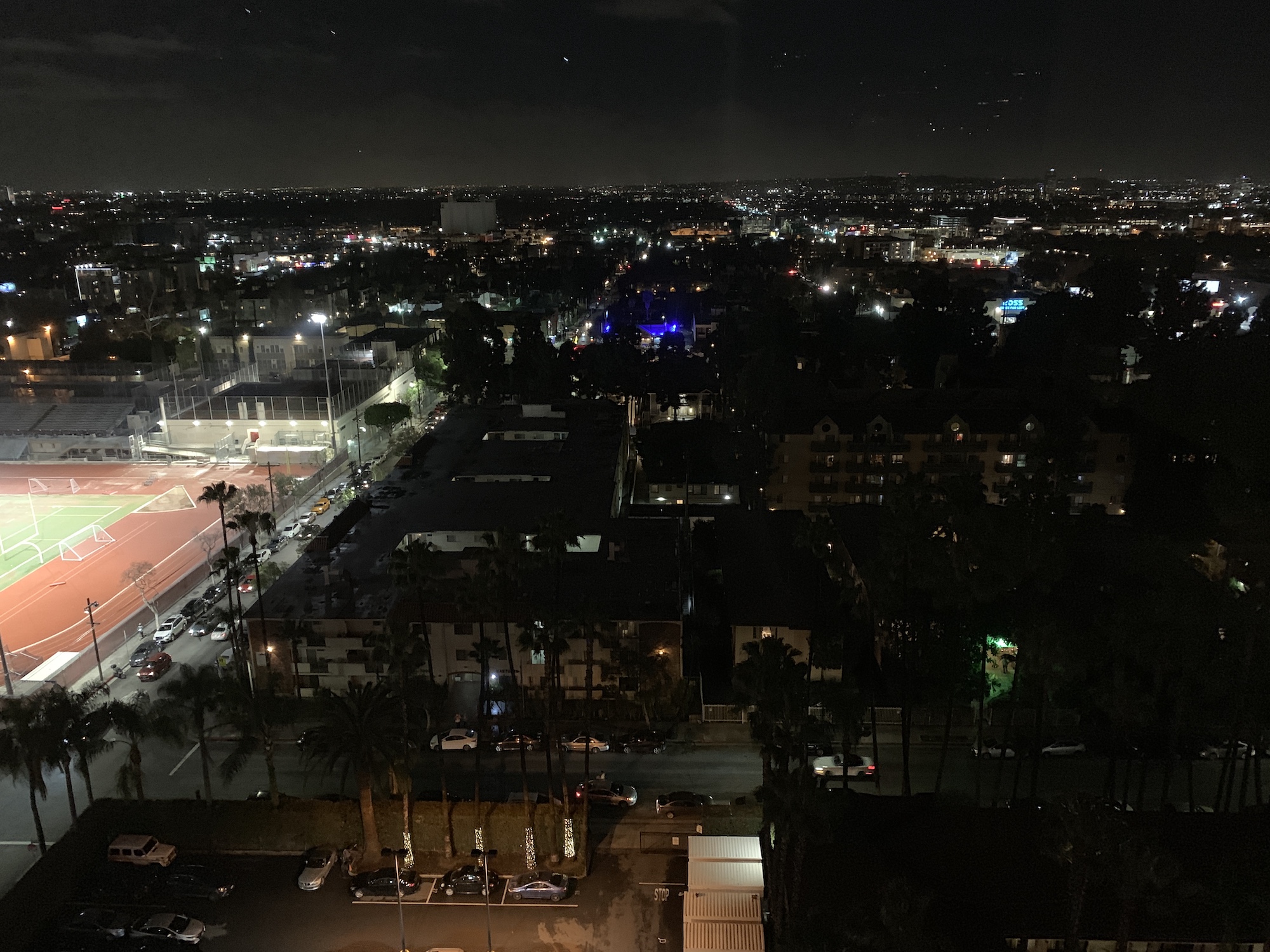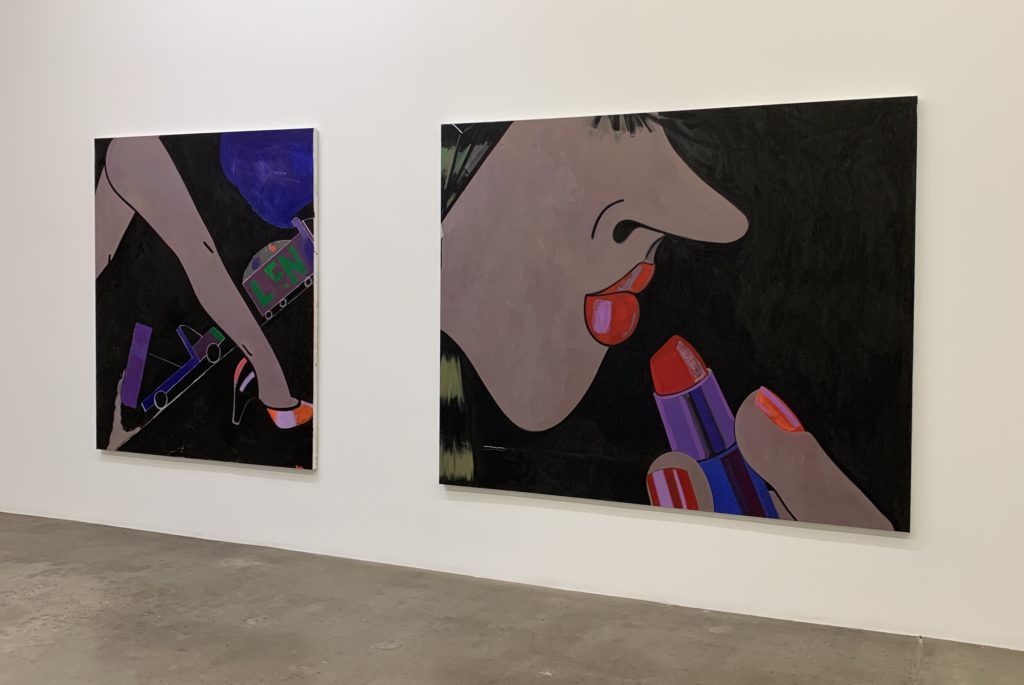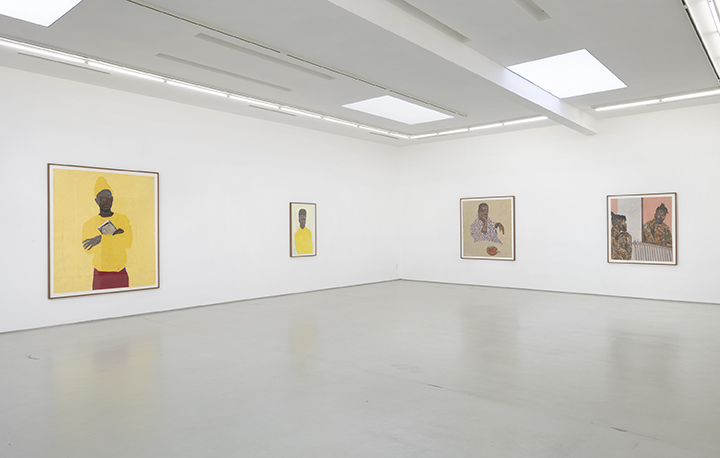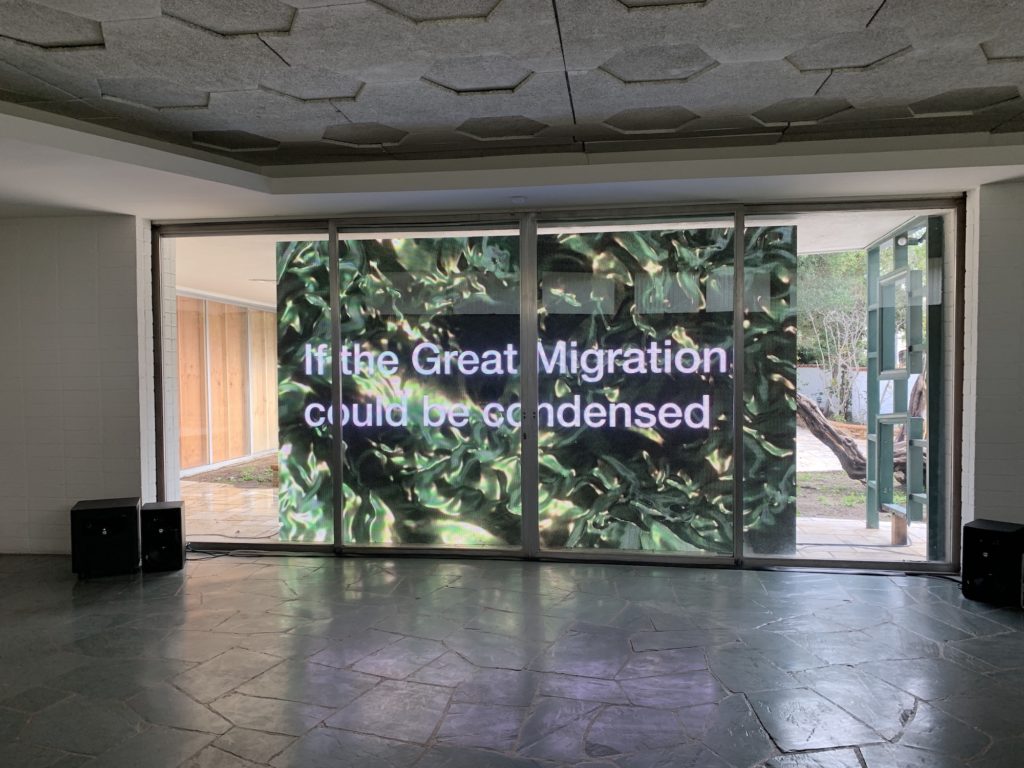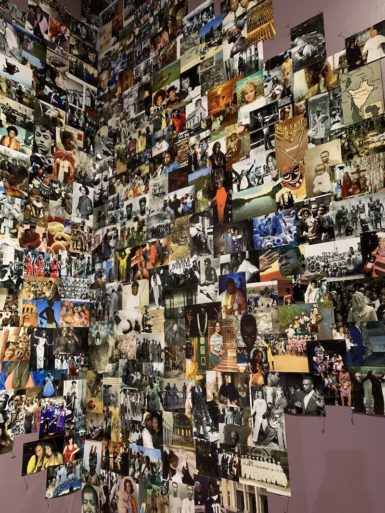[ad_1]
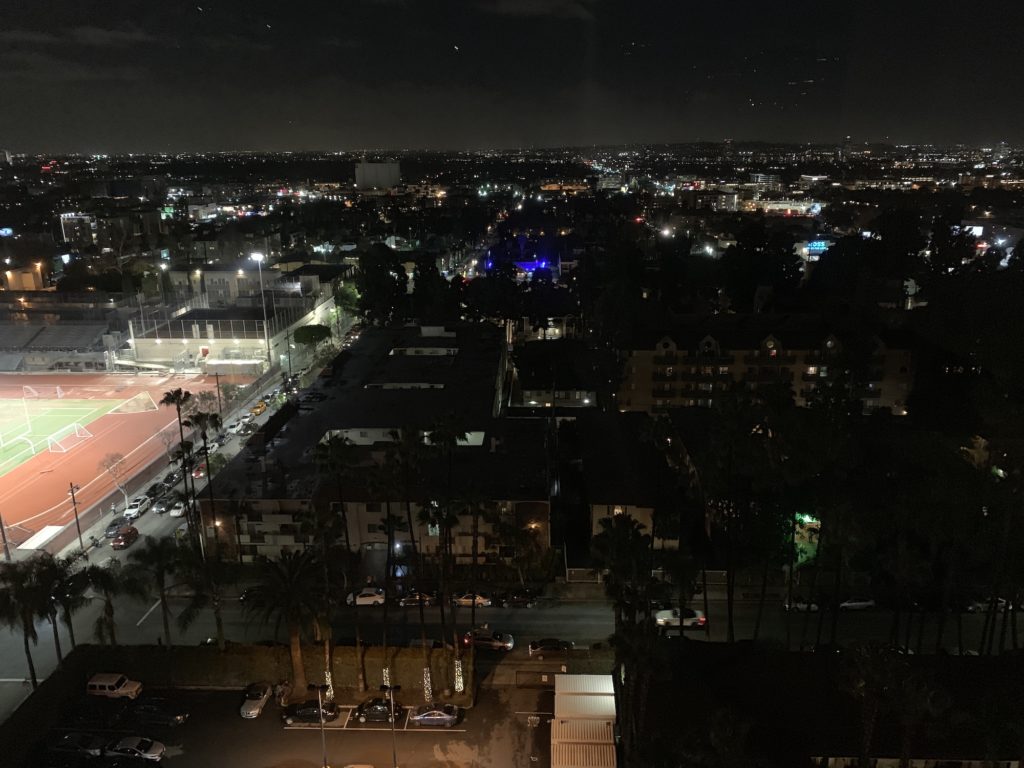
The city of Los Angeles, seen from above, after the galleries close for the night.
PHOTOS: ANDREW RUSSETH/ARTNEWS, EXCEPT WHERE NOTED
Being in a city filled with galleries and museums during an art fair makes for both pure pleasure and utter agony. Time is short, and one quickly has to begin making painful decisions about what to see. Such is the case in Los Angeles this week during Frieze, Felix, Art Los Angeles Contemporary, and all the action surrounding the fairs. I feel like Audrey Griswold in National Lampoon’s European Vacation (1985), when she dreams about being fed a feast worthy of the Sun King. It’s a thrill at first, but it’s hard to keep up. Below are reviews of seven shows I saw in L.A. this week and loved. Some close this weekend; others will be on view until long after the fairs close down. Plan accordingly, and enjoy.
“Ellen Berkenblit: Paintings”
Suzanne Vielmetter, through February 16
A sizable percentage of the comically inflected figurative painting that has been so in vogue in recent years owes a debt to the joyful, brilliantly hued works of Ellen Berkenblit—though the New York–based artist does it with more verve and ebullience than almost anyone else. Fingers with red nails apply luscious lipstick to a woman’s mouth, an orange leopard growls at a stoplight, high-heeled feet step forward, and a train races down the tracks, shooting pink steam. The show is an exegesis on the power of adornment, a reminder that a little ornamentation can go a long way.
“Amoako Boafo: I SEE ME”
Roberts Projects, through February 16
Graphically punchy from a distance, Amoako Boafo’s oil-on-paper portraits exude an aching amount of nuance up close, with every quick stroke for skin and fabric and background visible. That may sound messy, but it all coheres. Toyin Ojih Odutola’s inventive conjurings of texture and tone come to mind as a similarly ambitious endeavor, as well as the abstract planes of color found in some Milton Avery and Georgia O’Keeffe. When Boafo—born in Accra, Ghana, and based in Vienna—gets weird with perspective and pose, the works are particularly potent. In short, he’s one to watch.
“Parergon: Japanese Art of the 1980s and 1990s, Part 1”
Blum & Poe, through March 23
Curated by art historian Mika Yoshitake, this is a revelatory affair, with work made by Japanese artists in the last two decades of the 20th century that is rarely seen in the United States. The tone is ambitious and freewheeling, puckish with mystical flourishes. Yukinori Yanagi contributes two huge brown spheres covered in soil, one floating magically at the ceiling, the other on the ground. A futon-mattress installation by Tsuyoshi Ozawa set in one corner can be climbed to view gimlet-eyed street photographs. The pièce de résistance is Noboru Tsubaki’s Fresh Gasoline (1989), a gargantuan, craggily yellow mass topped with thin filaments that suggests a brain shooting electricity, which is an apt metaphor for this show. Part 2 arrives in April, and an additional section begins at the L.A. gallery Nonaka-Hill on February 17. Somebody please send the whole thing on a tour!
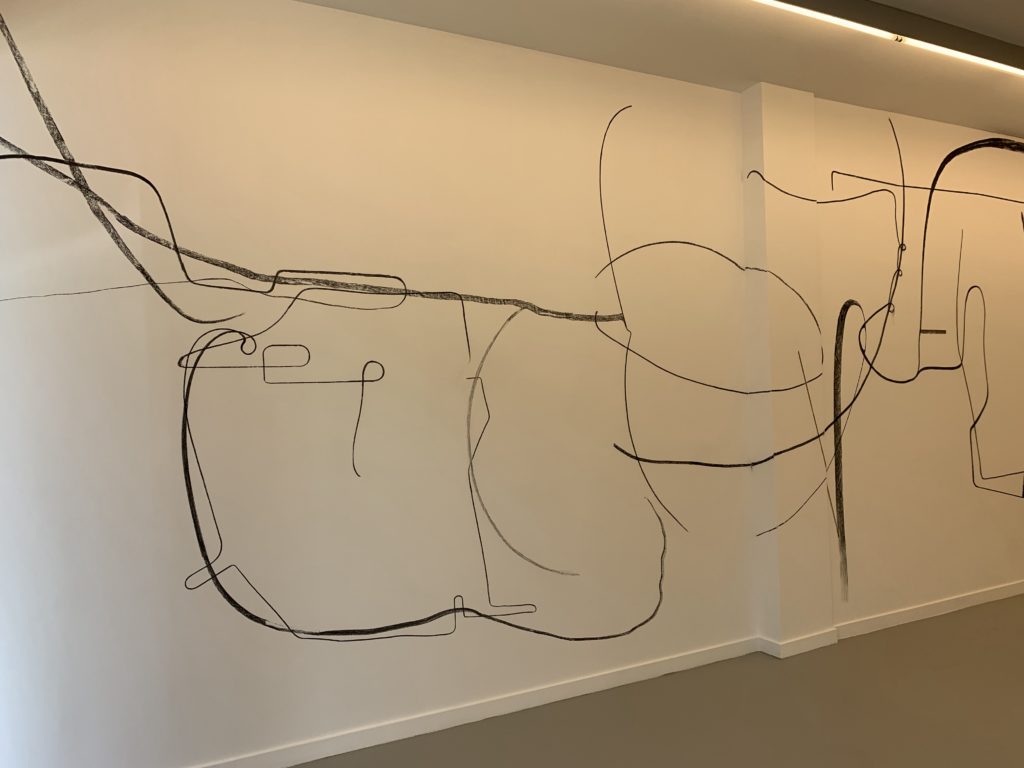
Partial installation view of “Albert Oehlen: Wall Drawing” at a Gagosian pop-up space in Beverly Hills.
“Albert Oehlen: Wall Drawing”
420a N. Camden Drive, Beverly Hills, presented by Gagosian through March 2
In classical music, certain unconventional types of instrumental performance like plucking the strings of a piano by hand or drumming on the body of a double bass, are termed “extended techniques.” Anything goes in contemporary art, of course, but German maestro Albert Oehlen’s spare wall drawing at this pop-up would seem to deserve that appellation, as they break rules with courtly aplomb. Perfect straight lines and sensuous curves give way to faltering scribbles, and hard-edged rectangles sit near long skid marks. It’s all connected, you sense, but its underlying system is satisfyingly elusive.
“Tony Cokes: Della’s House”
1690 S. Victoria Avenue, presented by Hannah Hoffman, through March 15
This is a sleeper hit. Set inside a Lafayette Square residence that once belonged to Paul Revere Williams, a prolific architect and the first black member of the American Institute of Architects, this show debuts two new video-text works that have all of the piquant concision that has become Tony Cokes’s trademark, more than 30 years into his career. One work focuses on Williams, culling snippets of his autobiography (putting uncomfortable white patrons at east is one topic); the other’s subject is Aretha Franklin, whose music provides a buoyant soundtrack. I dream of a world that has a TV channel devoted to Cokes videos. It would be a world with a great deal more candor and poetry than the one we live in now.
“Deana Lawson: Planes”
The Underground Museum, through February 17
Many of the photographs in this solo show—of black men and women posing in quotidian environs—will be familiar to Deana Lawson fans, but one could look at her work for quite a long time and never tire of it. Lawson, who’s now entering mid-career, has an uncanny eye for indelible details and compositions; her photos are tender and potent but never fussily staged in the way work by Jeff Wall can be. Ditto for the exhibition, with its purple walls and crystals here and there, plus found photos—of Anita Hill, JonBenét Ramsey, and countless anonymous people—running floor to ceiling in a couple corners. As history flows, Lawson’s art celebrates the grandeur of interior life.
“Outliers and American Vanguard Art”
Los Angeles County Museum of Art, through March 17
After showings at the National Gallery of Art in Washington, D.C., and the High Museum of Art in Atlanta, Lynne Cooke’s magnum opus arrived in Los Angeles. It unspools countless too-little-known stories about the canon of American art and handily eviscerate labels like “self-taught” or “outsider.” Electrifying Gee’s Bend quilts sit with Jessica Stockholder constructions and Alan Shields grids, and gems by Horace Pippin, Marsden Hartley, and Bill Traylor crackle like fireworks. With more than 200 works by scores of artists, this is not a show for a capsule review—but it is essential viewing.
[ad_2]
Source link

